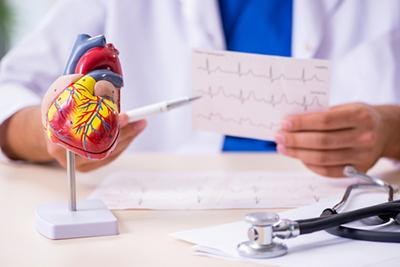Some Of Arogyajivan Medical Tourism For Cardiology
Some Of Arogyajivan Medical Tourism For Cardiology
Blog Article
7 Easy Facts About Arogyajivan Medical Tourism For Cardiology Shown
Table of ContentsThe 20-Second Trick For Arogyajivan Medical Tourism For CardiologyThe Single Strategy To Use For Arogyajivan Medical Tourism For Cardiology8 Simple Techniques For Arogyajivan Medical Tourism For CardiologyGetting The Arogyajivan Medical Tourism For Cardiology To WorkArogyajivan Medical Tourism For Cardiology for BeginnersAll about Arogyajivan Medical Tourism For CardiologyUnknown Facts About Arogyajivan Medical Tourism For Cardiology
ET in Room 103AB Smits will certainly present the research, "FFR Guided Severe Full Revascularization Versus Culprit Sore Just Treatment in People Providing With ST-Segment Altitude Coronary Infarction and Multi Vessel Disease: The COMPARE-ACUTE Trial," on Saturday, March 18, 2017, at 10:45 a.m. ET in the Main Tent (Hall D).You'll enhance people' quality of life after a life-altering event such as a cardiac arrest, heart failing or a heart rhythm problem. You'll also be associated with recognizing conditions, exactly how they advance and can be avoided. You'll look after grown-up clients with conditions such as: angina (breast discomfort triggered by constricting of the coronary arteries) arrhythmias (uneven heartbeat) heart murmurs as a result of heart valve illness cardiomyopathy (condition of the heart muscle) with cardiac arrest including pulmonary oedema (build-up of fluid) coronary artery apoplexy or myocardial infarction (cardiac arrest) frequently related to high blood stress (high blood pressure) and high cholesterol conditions of the arteries (atherosclerosis, arteritis, atheroma) opening in the heart and various other types of hereditary heart disease Working as a cardiologist, you'll be associated with a commonly fast-moving and dynamic area of medication.
Heart interventions typically avoid the need for open heart surgery while giving much better results than medicine alone. Within the field of cardiology, interventional cardiology concentrates on dealing with architectural heart problems making use of catheters. The bulk of the procedures are carried out on the cardio system, which contains your heart, arteries, and veins.
The Buzz on Arogyajivan Medical Tourism For Cardiology
: The heart gets far better blood circulation after balloon angioplasty. The blocked artery is gotten to by putting a catheter that has a balloon at the pointer. The artery's wall surfaces are extended open by inflating the balloon at the area of the obstruction. Throughout this surgery, persistent blockages in the coronary arteries are opened using a specialized shattering tool.
In most cases, a stent is after that put right into the blockage.: After balloon angioplasty or atherectomy, a tiny steel coil or mesh tube called a stent can be positioned in the artery. The stent is positioned at the end of a catheter, inserted through a capillary in the wrist or leg, and assisted as much as the heart, where it avoids freshly opened arteries from breaking down.
These consist of hypothermia and numerous ventricular assistance gadgets, such as intra-aortic balloon counterpulsation (IABP).: Blood flow from the mom to the unborn child is promoted by means of the foramen ovale, a little hole in the wall surface that separates the right and left top chambers of the heart throughout growth. Typically, throughout infancy, this hole shuts.
Arogyajivan Medical Tourism For Cardiology Fundamentals Explained
In some cases, it needs it to be blocked. It is a minimally invasive treatment that targets and harms nerves near the kidneys that can end up being over active and result in high blood pressure. Interventional cardiologists are educated read this post here to give details catheter-based therapies for heart condition, which is the primary difference between them and normal cardiologists.
There might be some anxiousness associated with an approaching heart or blood vascular treatment. By doing so, they can fix the issue without calling for open heart surgical procedure.
Individuals are offered a sedative to help them relax. An anesthetic is used to numb the location where the catheter is placed. The treatment takes concerning an hour, and patients might be called for to remain in the healthcare facility over night for surveillance. Heart bypass surgery is a significant procedure and, like any surgical procedure, carries some dangers.
Top Guidelines Of Arogyajivan Medical Tourism For Cardiology

Improved External Counter Pulsation (EECP) is done as a non-invasive treatment to lower the number and intensity of angina episodes. Treatment is administered through 3 sets of exterior inflatable cuffs that are applied around the reduced legs, top legs and butts. These cuffs continuously pump up and deflate between the relaxing duration of the heart beat and increase blood went back to the heart.
Arogyajivan Medical Tourism For Cardiology Things To Know Before You Buy

IABP led to increasing the amount of blood that can obtain pumped out of the heart by blowing up a balloon in the aorta in between each heartbeat. Opening the aorta allows a lot more blood circulation and as a result decreases exactly how difficult the heart needs to function - ArogyaJivan Medical Tourism for Cardiology. This same theory is related to EECP however is taken one action even more
This also reduces exactly how difficult the heart needs to function but on a much better scale, particularly for individuals with damaged check that heart tissue. People are eligible for therapy if they have actually been detected with disabling steady angina (Course III or IV Canadian Cardiovascular Culture or equivalent category), that in the viewpoint of a cardiologist or cardiothoracic surgeon, are not conveniently responsive to surgical intervention due to the fact that: Their condition is unusable, or at high threat of operative issues or postoperative failing; Their coronary anatomy is not easily open to such treatments; or They have co-morbid states, which develop excessive risk.
8 Simple Techniques For Arogyajivan Medical Tourism For Cardiology

Individuals will complete a cardiovascular test before starting EECP treatment. This will certainly develop their workout capability and give last clearance to start treatment. It will identify the extent, regularity and duration of upper body discomfort with exercise. After completing 35 treatment sessions, there will certainly be an additional anxiety examination determining the exact same values.

The orientation is created to provide a specific the possibility to experience exactly what therapies will be like. There will certainly be an orientation to the area, a complete explanation of the therapy sessions, education regarding the therapy process, and a 15-minute test of the ECP device in procedure. Any kind of questions about the therapy will likewise be addressed at this time.
Arogyajivan Medical Tourism For Cardiology for Beginners
Heart rehabilitation might start before the healthcare facility releases you and must proceed long-lasting. Cardiac rehab phases are: Inpatient (starting while you're in the hospital). On your own (keeping up exercises on your own and at your very own cost).
Report this page